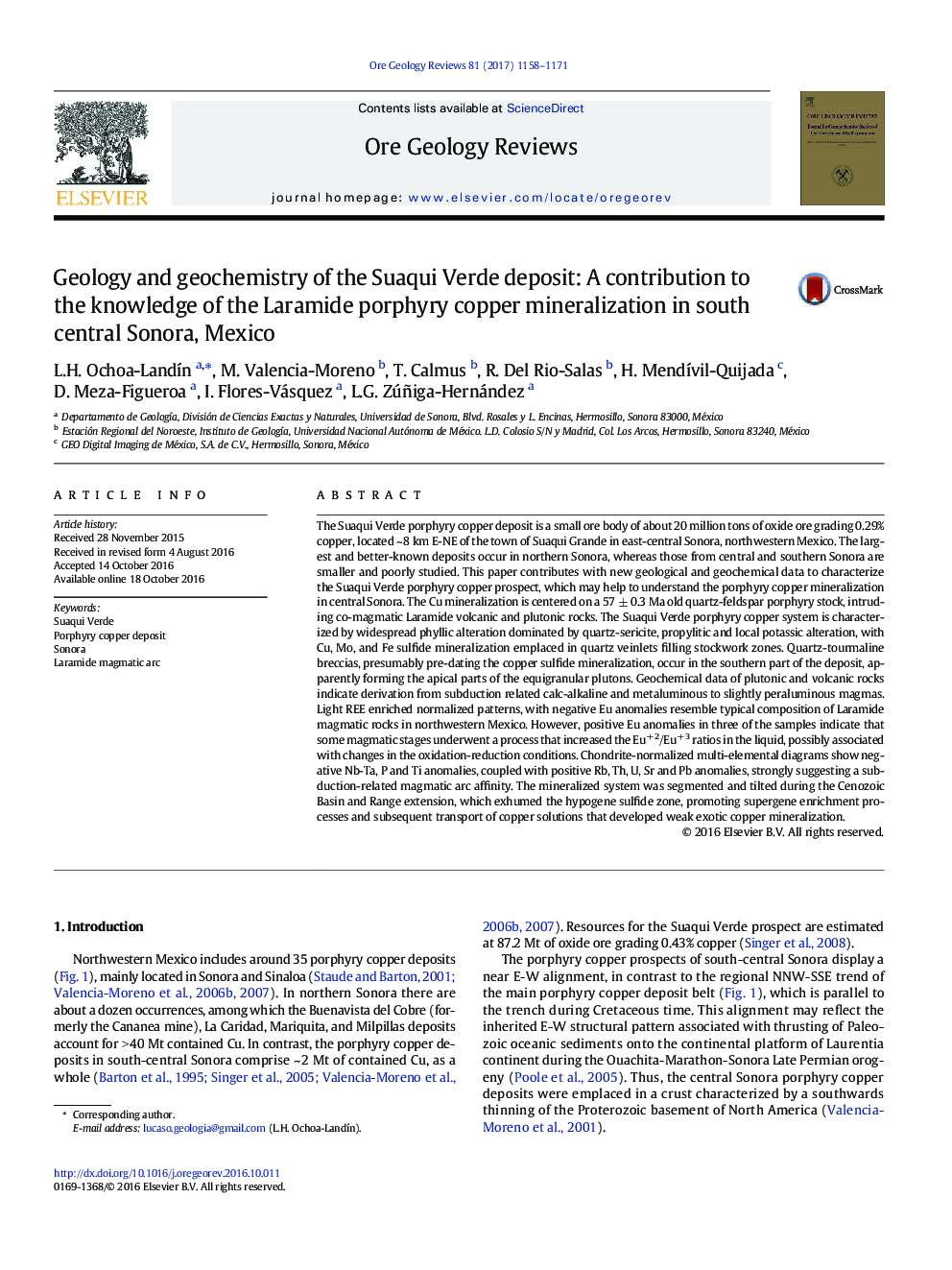| کد مقاله | کد نشریه | سال انتشار | مقاله انگلیسی | نسخه تمام متن |
|---|---|---|---|---|
| 5782538 | 1413925 | 2017 | 14 صفحه PDF | دانلود رایگان |
The Suaqui Verde porphyry copper deposit is a small ore body of about 20 million tons of oxide ore grading 0.29% copper, located ~ 8 km E-NE of the town of Suaqui Grande in east-central Sonora, northwestern Mexico. The largest and better-known deposits occur in northern Sonora, whereas those from central and southern Sonora are smaller and poorly studied. This paper contributes with new geological and geochemical data to characterize the Suaqui Verde porphyry copper prospect, which may help to understand the porphyry copper mineralization in central Sonora. The Cu mineralization is centered on a 57 ± 0.3 Ma old quartz-feldspar porphyry stock, intruding co-magmatic Laramide volcanic and plutonic rocks. The Suaqui Verde porphyry copper system is characterized by widespread phyllic alteration dominated by quartz-sericite, propylitic and local potassic alteration, with Cu, Mo, and Fe sulfide mineralization emplaced in quartz veinlets filling stockwork zones. Quartz-tourmaline breccias, presumably pre-dating the copper sulfide mineralization, occur in the southern part of the deposit, apparently forming the apical parts of the equigranular plutons. Geochemical data of plutonic and volcanic rocks indicate derivation from subduction related calc-alkaline and metaluminous to slightly peraluminous magmas. Light REE enriched normalized patterns, with negative Eu anomalies resemble typical composition of Laramide magmatic rocks in northwestern Mexico. However, positive Eu anomalies in three of the samples indicate that some magmatic stages underwent a process that increased the Eu+ 2/Eu+ 3 ratios in the liquid, possibly associated with changes in the oxidation-reduction conditions. Chondrite-normalized multi-elemental diagrams show negative Nb-Ta, P and Ti anomalies, coupled with positive Rb, Th, U, Sr and Pb anomalies, strongly suggesting a subduction-related magmatic arc affinity. The mineralized system was segmented and tilted during the Cenozoic Basin and Range extension, which exhumed the hypogene sulfide zone, promoting supergene enrichment processes and subsequent transport of copper solutions that developed weak exotic copper mineralization.
Journal: Ore Geology Reviews - Volume 81, Part 3, March 2017, Pages 1158-1171
